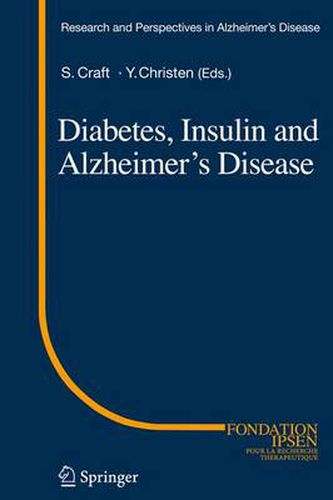Readings Newsletter
Become a Readings Member to make your shopping experience even easier.
Sign in or sign up for free!
You’re not far away from qualifying for FREE standard shipping within Australia
You’ve qualified for FREE standard shipping within Australia
The cart is loading…






This title is printed to order. This book may have been self-published. If so, we cannot guarantee the quality of the content. In the main most books will have gone through the editing process however some may not. We therefore suggest that you be aware of this before ordering this book. If in doubt check either the author or publisher’s details as we are unable to accept any returns unless they are faulty. Please contact us if you have any questions.
The central nervous system controls vital functions by ef?ciently coordinating peripheral and central cascades of signals and networks in an orchestrated manner. Historically, the brain was considered to be insulin independent. These earlier views have been challenged by ?ndings demonstrating that insulin exerts multiple actions in the brain, regulating vital biological processes such as life span, neuronal survival, cognition, reproduction, feeding behavior, energy balance, and glucose and fat metabolism, and that inef?cient central action of insulin contributes to the development of severe pathologies (Banks et al. 2000; Gerozissis 2003, 2004, 2008; Lustman and Clouse 2005; Okamoto et al. 2001; Park 2002; Perrin et al. 2004; Pocai et al. 2005; Reger et al. 2008; Schwartz and Porte, 2005; Schubert et al. 2004; van der Heide et al. 2005; Woods et al. 1979; Wrighten et al. 2008). Insulin and speci?c insulin receptors are widely distributed in the networks of the central nervous system related mainly to feeding or cognition (Baskin et al. 1983; Bruning et al. 2000; Gerozissis 2003, 2008; Havrankova et al. 1978a, b; Schechter et al. 1996; Schulingkamp et al. 2000; Schwartz et al. 1992; Zhao et al. 2004). Insulin receptors located in the synapses of neurons and in astrocytes are present in high concentrations in the cerebral cortex, olfactory bulb, hippocampus, amygdala, cerebellum and hypothalamus (Abbott et al., 1999; Havrankova et al.
$9.00 standard shipping within Australia
FREE standard shipping within Australia for orders over $100.00
Express & International shipping calculated at checkout
This title is printed to order. This book may have been self-published. If so, we cannot guarantee the quality of the content. In the main most books will have gone through the editing process however some may not. We therefore suggest that you be aware of this before ordering this book. If in doubt check either the author or publisher’s details as we are unable to accept any returns unless they are faulty. Please contact us if you have any questions.
The central nervous system controls vital functions by ef?ciently coordinating peripheral and central cascades of signals and networks in an orchestrated manner. Historically, the brain was considered to be insulin independent. These earlier views have been challenged by ?ndings demonstrating that insulin exerts multiple actions in the brain, regulating vital biological processes such as life span, neuronal survival, cognition, reproduction, feeding behavior, energy balance, and glucose and fat metabolism, and that inef?cient central action of insulin contributes to the development of severe pathologies (Banks et al. 2000; Gerozissis 2003, 2004, 2008; Lustman and Clouse 2005; Okamoto et al. 2001; Park 2002; Perrin et al. 2004; Pocai et al. 2005; Reger et al. 2008; Schwartz and Porte, 2005; Schubert et al. 2004; van der Heide et al. 2005; Woods et al. 1979; Wrighten et al. 2008). Insulin and speci?c insulin receptors are widely distributed in the networks of the central nervous system related mainly to feeding or cognition (Baskin et al. 1983; Bruning et al. 2000; Gerozissis 2003, 2008; Havrankova et al. 1978a, b; Schechter et al. 1996; Schulingkamp et al. 2000; Schwartz et al. 1992; Zhao et al. 2004). Insulin receptors located in the synapses of neurons and in astrocytes are present in high concentrations in the cerebral cortex, olfactory bulb, hippocampus, amygdala, cerebellum and hypothalamus (Abbott et al., 1999; Havrankova et al.